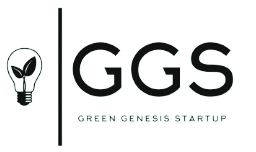
What is the circular economy?
The circular economy is a new model of production, and consumption that guarantees sustainable growth over time. With the circular economy, we promote the optimization of resources, the reduction in the consumption of raw materials, and the use of waste, recycling it or giving it a new life to turn it into new products. Therefore, the circular economy aims to make the most of the material resources available to us by extending the life cycle of products. The idea arises from imitating nature, where everything has value, and everything is used, where waste becomes a new resource. In this way, the balance between progress, and sustainability is maintained.
There is only one planet, Earth, yet by 2050, the world will be consuming as if there were three.
1. Global consumption of materials such as biomass, fossil fuels, metals, and minerals is expected to double in the next forty years
2. annual waste generation is projected to increase by 70% by 2050
3. As half of total greenhouse gas emissions, and more than 90% of biodiversity loss, and water stress come from resource extraction, and processing, the European Green Deal4 launched a concerted strategy for a climate-neutral, resource-efficient, and competitive economy. Scaling up the circular economy from front-runners to the mainstream economic players will make a decisive contribution to achieving climate neutrality by 2050, and decoupling economic growth from resource use while ensuring the long-term competitiveness of the EU, and leaving no one behind.
To fulfil this ambition, the EU needs to accelerate the transition towards a regenerative growth model that gives back to the planet more than it takes, advance towards keeping its resource consumption within planetary boundaries, and therefore strive to reduce its consumption footprint, and double its circular material use rate in the coming decade. For business, working together on creating the framework for sustainable products will provide new opportunities in the EU, and beyond. This progressive, yet irreversible transition to a sustainable economic system is an indispensable part of the new EU industrial strategy. A recent study estimates that applying circular economy principles across the EU economy has the potential to increase EU GDP by an additional 0.5% by 2030 creating around 700 000 new jobs5. There is a clear business case for individual companies too: since manufacturing firms in the EU spend on average about 40% on materials, closed loop models can increase their profitability, while sheltering them from resource price fluctuations.
Building on the single market, and the potential of digital technologies, the circular economy can strengthen the EU’s industrial base, and foster business creation, and entrepreneurship among SMEs. Innovative models based on a closer relationship with customers, mass customisation, the sharing, and collaborative economy, and powered by digital technologies, such as the internet of things, big data, blockchain, and artificial intelligence, will not only accelerate circularity but also the dematerialisation of our economy, and make Europe less dependent on primary materials.on primary materials.
The European Commission presented in March 2020 the Circular Economy Action Plan which aims at more sustainable products, waste reduction, and empowering citizens (such as the "right to repair"). Special attention is given to resource-intensive sectors such as electronics, and ICT, plastics, textiles or construction.
In February 2021, the Parliament voted on the circular economy action plan, and called for additional measures to move towards a carbon-neutral, sustainable, toxics-free, and fully circular economy by 2050. These should include stricter laws on recycling, and binding targets for 2030 to reduce the ecological footprint of material use, and consumption.
In March 2022, the Commission unveiled the first package of measures to accelerate the transition to a circular economy, as part of the circular economy action plan. Proposals include the promotion of sustainable products, empowering consumers for the green transition, the revision of the regulation on construction products, and a strategy on sustainable textiles.
What is the difference between the circular economy, and the linear economy?
Until now we have applied linear production models, i.e. we extract, produce, consume, and discard. The society in which we live means that the pace of consumption is accelerating, a model that is fast but not very sustainable for the planet.
The circular economy establishes a more sustainable model of production, and consumption, in which raw materials are kept longer in the production cycles, and can be used in a recurrent way, thus generating much less waste. As its name suggests, the essence of this model is that resources are kept in the economy for as long as possible, promoting that the waste we generate can be used as raw material for other industries.
